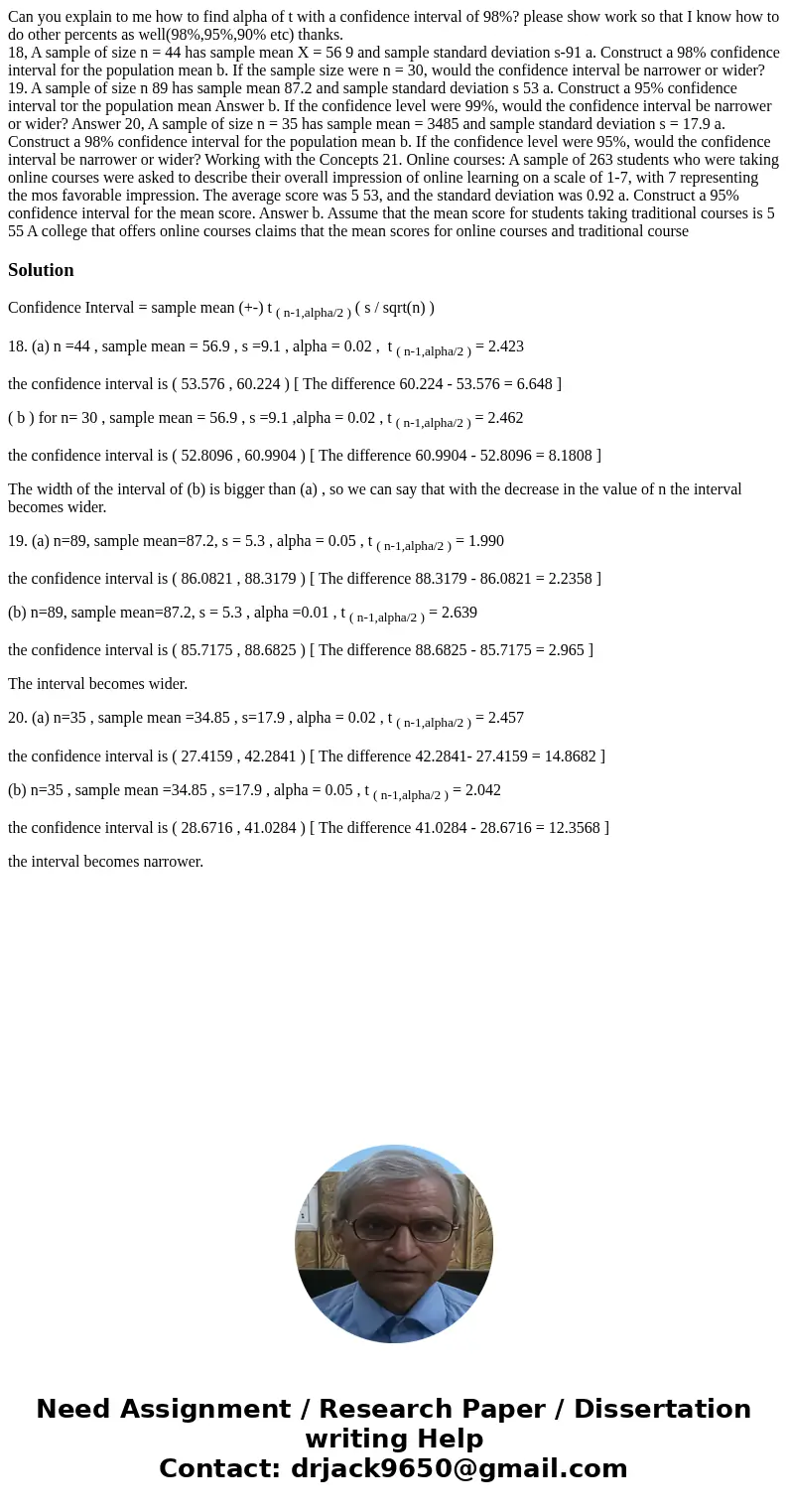Can you explain to me how to find alpha of t with a confiden
Solution
Confidence Interval = sample mean (+-) t ( n-1,alpha/2 ) ( s / sqrt(n) )
18. (a) n =44 , sample mean = 56.9 , s =9.1 , alpha = 0.02 , t ( n-1,alpha/2 ) = 2.423
the confidence interval is ( 53.576 , 60.224 ) [ The difference 60.224 - 53.576 = 6.648 ]
( b ) for n= 30 , sample mean = 56.9 , s =9.1 ,alpha = 0.02 , t ( n-1,alpha/2 ) = 2.462
the confidence interval is ( 52.8096 , 60.9904 ) [ The difference 60.9904 - 52.8096 = 8.1808 ]
The width of the interval of (b) is bigger than (a) , so we can say that with the decrease in the value of n the interval becomes wider.
19. (a) n=89, sample mean=87.2, s = 5.3 , alpha = 0.05 , t ( n-1,alpha/2 ) = 1.990
the confidence interval is ( 86.0821 , 88.3179 ) [ The difference 88.3179 - 86.0821 = 2.2358 ]
(b) n=89, sample mean=87.2, s = 5.3 , alpha =0.01 , t ( n-1,alpha/2 ) = 2.639
the confidence interval is ( 85.7175 , 88.6825 ) [ The difference 88.6825 - 85.7175 = 2.965 ]
The interval becomes wider.
20. (a) n=35 , sample mean =34.85 , s=17.9 , alpha = 0.02 , t ( n-1,alpha/2 ) = 2.457
the confidence interval is ( 27.4159 , 42.2841 ) [ The difference 42.2841- 27.4159 = 14.8682 ]
(b) n=35 , sample mean =34.85 , s=17.9 , alpha = 0.05 , t ( n-1,alpha/2 ) = 2.042
the confidence interval is ( 28.6716 , 41.0284 ) [ The difference 41.0284 - 28.6716 = 12.3568 ]
the interval becomes narrower.

 Homework Sourse
Homework Sourse